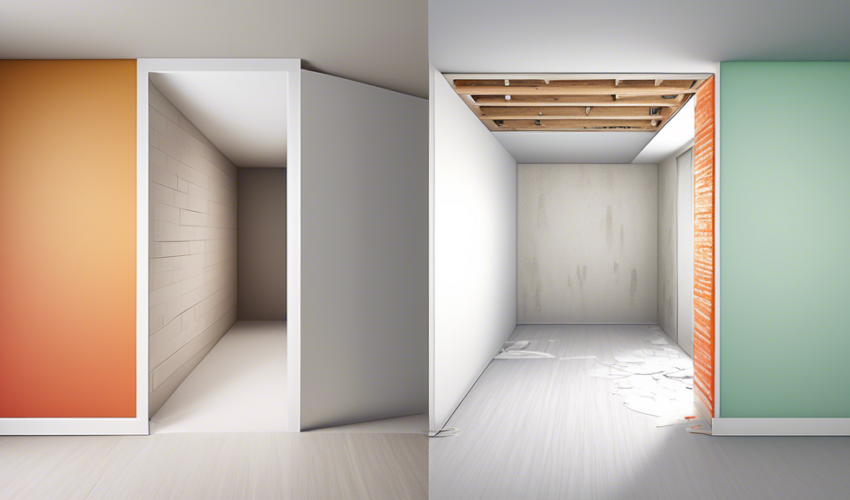Choosing between drywall and plaster is a critical decision when it comes to construction and remodeling projects. Both materials offer distinct advantages and potential drawbacks, affecting everything from installation time and cost to the finished look and performance of your walls. In this article, we’ll delve into the key differences, benefits, and considerations of drywall and plaster to help you make an informed choice that best suits your project’s needs.
What is Drywall?
Drywall, also known as gypsum board, wallboard, or Sheetrock (a popular brand name), is a versatile panel made of gypsum plaster pressed between two thick sheets of paper. It became popular in the mid-20th century as an easier and more cost-effective alternative to traditional plaster. Drywall panels are typically available in four-by-eight-foot sheets, with varying thicknesses suited for different applications.
What is Plaster?
Plaster has been used for centuries to create smooth, durable wall finishes. The most common method involves applying several layers of plaster over lath (a framework of wood, metal, or gypsum boards). The first coat, or “scratch coat,” is applied to the lath, followed by a “brown coat,” and finally, a fine “finish coat.” This multi-step process requires considerable skill and time but results in a solid, monolithic wall surface.
Key Differences
Durability
Plaster walls are known for their superior strength and durability. The layering and curing process creates a hard, dense surface that is resistant to dings and scratches. Drywall, while reasonably sturdy, is more susceptible to damage but can be easily patched or replaced.
Soundproofing
The solid nature of plaster offers better soundproofing compared to drywall. Plaster’s dense composition helps significantly reduce sound transmission between rooms, making it an excellent choice for homes, schools, and buildings where noise reduction is a priority.
Installation and Labor Cost
Installing drywall is generally faster and less labor-intensive than plastering. Drywall panels can be quickly mounted to studs and taped and finished at the seams, allowing for more rapid construction timelines. Conversely, plaster requires skilled labor to apply and finish the multiple layers, leading to higher labor costs and longer project durations.
Environmental Impact
Both materials have environmental considerations. Drywall manufacturing is energy-intensive, but it often contains recycled content, and the panels are recyclable. Plaster, particularly lime-based plasters, has a lower environmental impact in terms of production, but waste from plaster demolition is more challenging to recycle.
Customization and Aesthetics
Plaster provides a level of artistic flexibility that is hard to match with drywall. Skilled plasterers can create a variety of textures and finishes, from smooth and polished to textured or patterned. Drywall offers a smooth, consistent surface that serves as a blank canvas for paint, wallpaper, or other finishes, but lacks the dimensional characteristics of plaster.
Cost Considerations
The material cost for drywall is typically lower than that for plaster. However, the total cost of a drywall or plaster project is influenced strongly by labor expenses. Drywall installation and finishing are less labor-intensive, making it more cost-effective for many budgets, whereas plastering requires a higher level of craftsmanship, contributing to its higher overall cost.
Conclusion
Ultimately, the choice between drywall and plaster depends on a range of factors, including budget, project timeline, desired aesthetic, and performance requirements. Drywall offers a practical, cost-effective solution suitable for a wide range of applications. In contrast, plaster provides a higher level of durability, soundproofing, and custom finishes at a higher cost. Assessing the specific needs and constraints of your project will help guide your decision between these two classic wall finishing options.

